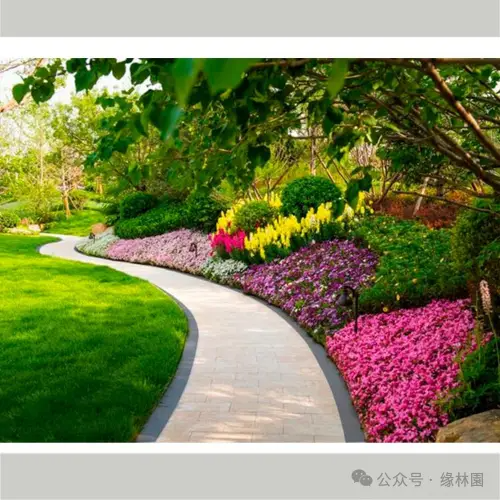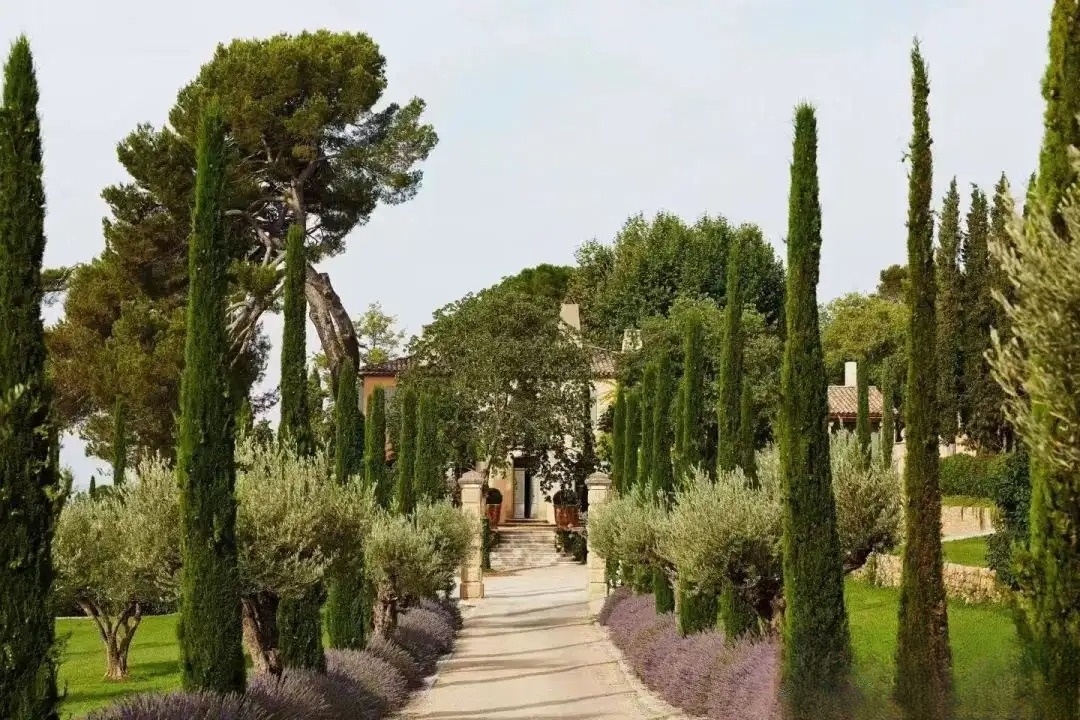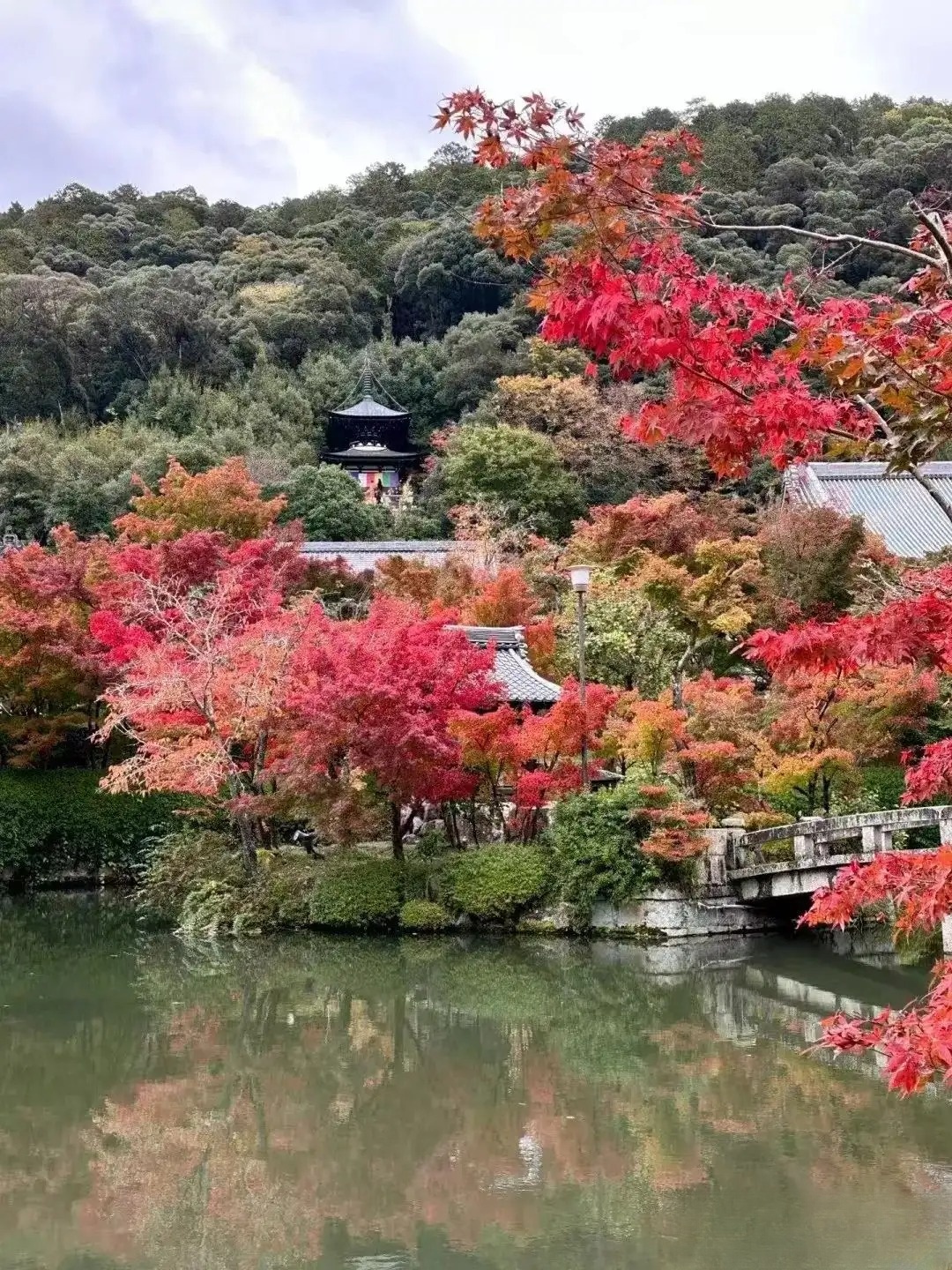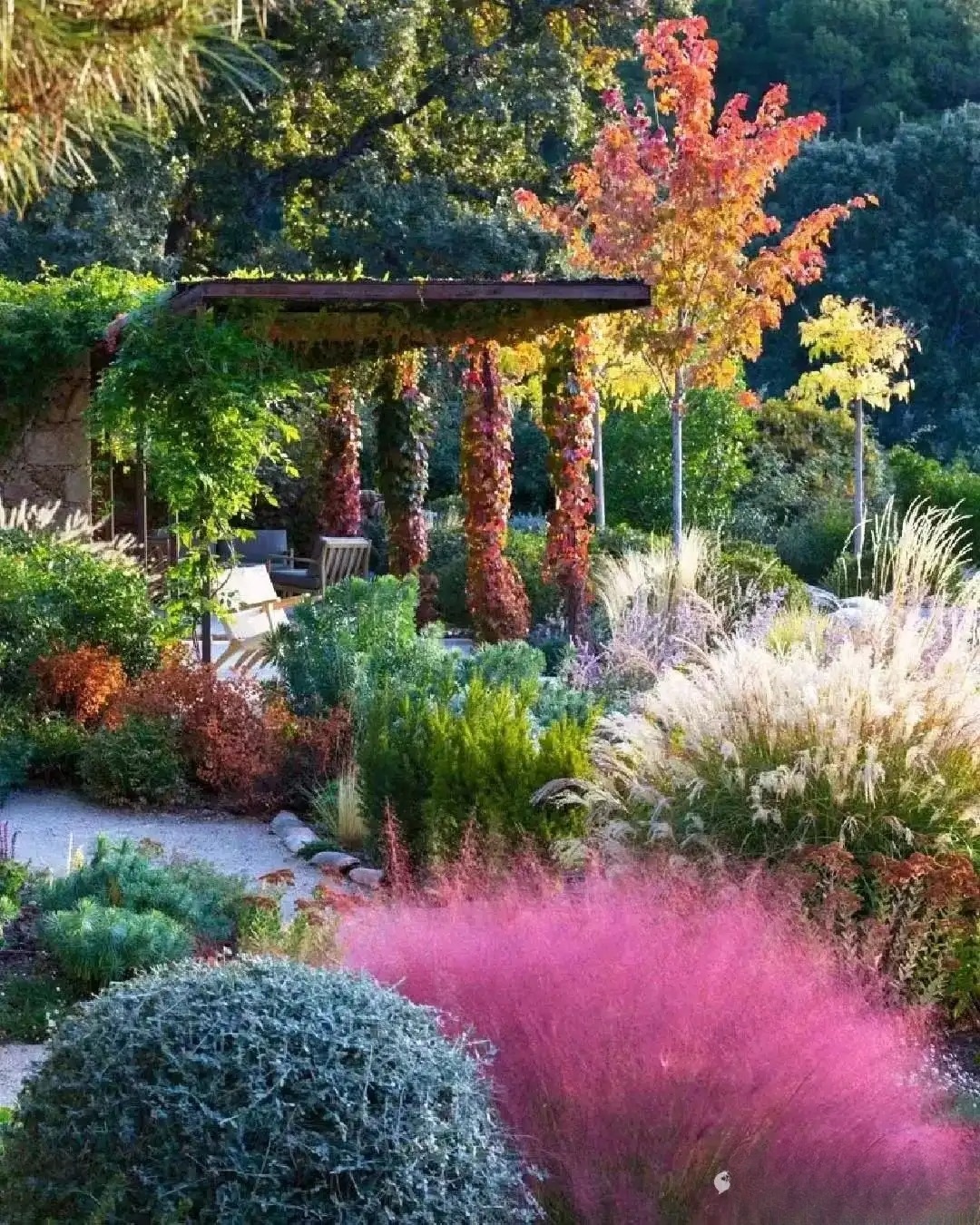The scientific configuration and mutual growth and mutual restraint of garden plants
In the hustle and bustle of the city, gardening is like a peaceful oasis, bringing freshness and comfort to people. The arrangement of plants is not a simple list, but an art that contains profound science and aesthetics. The mutual growth and mutual restraint between plants is the most important code in this art. Only by mastering it can the plants in the garden thrive and show the most charming posture.

1. The phenomenon of mutual growth and mutual restraint of plants in landscaping
1. Combinations of plants that counteract each other
In the microcosm of the garden, some plants seem to have invisible "hostility" with each other. Robinia and lilac, two seemingly independent plants, have secretions that inhibit the growth of nearby flowers and trees. When they are planted next to each other, the surrounding flowers may grow slowly, with sparse branches and leaves, and it is difficult to show the luxuriance they should have. Lilac and violet are even more of a pair of "enemies". Once mixed, it is like falling into a survival crisis. The lives of each other will be seriously threatened. The flowers may wither prematurely and the plants will gradually weaken. Walnut trees are no exception. Its leaves and roots can secrete special substances that inhibit a variety of plants, as if they have demarcated an exclusive territory around them, making it difficult for other plants to grow safely near them. When grapes are interplanted with small-leaved elms, the growth of grapes will be hindered, the vines cannot be fully extended, and the fruit yield and quality will be greatly reduced. Elms cannot coexist harmoniously with oaks and birches. The mutual repulsion between them will lead to poor growth of trees, thin trunks, and susceptibility to diseases and insect pests.
2. Plant combinations that complement each other
However, nature has also endowed many plants with a wonderful relationship of mutual support. Calendula and roses can be called a "golden pair". Calendula can effectively control soil nematodes and create a healthy growth environment for roses. Under the protection of calendula, roses flourish, and the flowers are more gorgeous and colorful. When grapes and violets grow together, a magical "chemical reaction" will occur, and the aroma of the grapes will be richer and mellower, as if they have absorbed the fragrance of violets. Peonies and peonies can complement each other. The presence of peonies can make peonies more luxuriant, and the flowers are large and colorful. Together, the two form a gorgeous landscape in the garden.

2. Scientific configuration methods of garden greening plants
1. Consider the ecological habits of plants
Plants, like humans, have their own unique living habits and preferences for the environment. When configuring garden plants, it is necessary to follow the plant's own growth rules and their requirements for environmental conditions such as light, water, and soil. Sun-loving plants should be planted in open areas with plenty of sunlight, allowing them to enjoy the sun and photosynthesis; while shade-tolerant plants are suitable for placement in the shade of buildings or in the shade of tall trees to avoid direct sunlight. For moisture-loving plants, such as calamus and water lilies, they should be planted near water sources or areas with high humidity to ensure that their roots can fully absorb water; drought-tolerant plants, such as cacti and agaves, can thrive in relatively dry hillsides or sandy and rocky land. Only by allowing each type of plant to find its place can a harmonious and stable plant community be built. As the tall backbone of the garden, trees provide shade for the shrubs and ground cover plants below; shrubs fill the space between trees and increase the sense of layering in the garden; ground cover plants such as lawns and mosses cover the ground to prevent soil erosion and maintain soil moisture; climbing plants such as wisteria and trumpet creeper can climb and grow with the help of walls and trellises, adding to the beauty of vertical greening; rock plants adapt to the poor soil and harsh environment in the cracks of rocks, adding vitality to rockery and stone walls; aquatic plants such as lotus and reeds sway in the water, creating a lively waterscape.
2. Pay attention to plant diversity
Nature is a rich and colorful treasure house of plants, with a variety of plant species, each of which has a unique ornamental value. In the layout of the garden, this feature should be fully utilized and a variety of planting methods should be reasonably adopted. Solitary planting can highlight the individual beauty of plants, such as a tall and upright ginkgo or a graceful cedar, which is independent of the lawn or the center of the square, becoming the focus of the entire space and attracting people's attention. Row planting is often used on both sides of the road or in regular gardens. Neatly arranged trees such as street trees can create a solemn and orderly atmosphere and guide people's sight. Piece planting can form a large area of color blocks or flower sea effects, such as large tracts of tulips, cherry blossom forests, etc., which give people a strong visual impact and shock. Group planting is to combine multiple plants into communities, simulate the natural ecological environment, and show the richness and diversity of plant groups. Mixed planting is to cleverly match plants of different forms, colors, and flowering periods together, so that the garden can present a variety of landscape effects in different seasons, avoiding monotony and boredom.
3. Pay attention to shape and color matching
The shapes and colors of garden plants are like the brushes in the hands of painters, which can outline a series of colorful paintings. When configuring plants, plants of different shapes and colors should be cleverly matched according to the characteristics of the terrain. Tall trees and low shrubs, spherical plants and weeping plants are combined to form a spatial structure with staggered heights and density, avoiding the conflict of perspectives between plants and making the entire garden landscape look harmonious and natural. At the same time, the color matching of plants is also crucial. Contrasting colors can be matched, such as red and green, yellow and purple, to form a sharp visual contrast and increase the liveliness and attractiveness of the landscape; similar colors can also be matched, such as orange and yellow, blue and purple, to create a soft and quiet atmosphere. In different seasons, the seasonal changes of plants should also be considered. In spring, the flowers are in full bloom, in summer, the trees are shady, in autumn, the red leaves are like fire, and in winter, the branches are vigorous, so that the garden can show its unique charm in the cycle of the four seasons.
4. Integrating plant culture with the surrounding environment
Plants have a profound heritage and rich symbolic meaning in human culture. In landscaping, the ingenious integration of plant culture and the surrounding environment can give the garden a deeper connotation and emotion. For example, the three friends of winter - pine, bamboo and plum, are often planted in the private gardens of literati and scholars. Their qualities of not fearing the severe cold and being tenacious are consistent with the noble character and spiritual realm pursued by literati, and have become cultural symbols in the garden. Pine, evergreen, symbolizes longevity and tenacity; bamboo, modest and restrained, represents humility and nobility; plum, proud of snow and frost, implies strength and indomitable. Pine and cypress are mostly planted in cemeteries. Their solemn and solemn images express people's respect and remembrance for the deceased. In some classical gardens, plants are also configured according to poetry and allusions, such as "picking chrysanthemums under the eastern fence, leisurely seeing the southern mountains", planting chrysanthemums under the eastern fence of the garden creates a pastoral atmosphere.

3. Plant matching recommendations and fertilization management
1. Plant combination recommendations
1. Berberis and Peony Combination : Berberis blooms in spring, with small yellow flowers, leaves turn red in autumn, and fruits are bright red; Peony blooms in late spring and early summer, with large flowers and bright colors. The combination of the two has a total flowering period of nearly two months. In spring, you can enjoy the abundant flowers of peony and yellow flowers of Berberis, in summer, the color of peony leaves, and in autumn, the red leaves and fruits of Berberis. There are views to enjoy in all four seasons.
2. Peony and Spiraea combination : Spiraea blooms after the peony blooms, and the total flowering period can reach one and a half months. Spiraea flowers are small and dense, white or pink, and the leaves turn red in autumn. When paired with peony, the landscape is rich in layers and highly ornamental.
3. Maple and Berberis combination : Maple is tall and upright, with leaves turning brilliant red or yellow in autumn; Berberis is relatively short, with brightly colored leaves and fruits. The combination of the two forms a three-layer ornamental structure, with colorful maple leaves on the upper layer, eye-catching red Berberis leaves and fruits in the middle layer, and ground cover or lawn on the lower layer. The contrast is beautiful and intoxicating.
4. Lilac and spirea combination : Lilac blooms in spring, with a fragrant flower, followed by spirea. The combination of the two flowers blooms for nearly a month and can form an independent community in an open area. The fragrance of lilac and the elegance of spirea blend together, attracting many bees and butterflies, adding vitality to the garden.
5. Combination of multiple varieties of lilac : Different varieties of lilac have slightly different flowering periods. Planting them together can last up to one and a half months. The early-flowering varieties bloom in turn to the late-flowering varieties. The flowers are purple, white, pink and other colors. The fragrance of the flowers fills the entire garden, forming a colorful and fragrant sea of lilac flowers.
6. Combination of spirea and daisy : spirea has a longer flowering period, while daisy blooms in late spring and early summer. The flowering period of the two combined is as long as three months from spring to summer. The lush flowers of spirea and the fresh flowers of daisy complement each other, creating a lively and natural garden atmosphere.
7. Rose variety combination : Rose varieties are numerous, with rich colors and different flowering periods. By rationally selecting different varieties for combination, the group flowering period is nearly half a year or more. From early spring to late autumn, the garden can see the delicate flowers of roses, red like fire, pink like clouds, white like snow, becoming a beautiful landscape in the garden.
8. Combination of Acer truncatum and Euonymus : Acer truncatum blooms in spring and its leaves turn red in autumn; Euonymus has lush branches and leaves, and its fruits crack open in autumn to reveal the red aril. The total flowering period of the combination of the two is more than one month, and the autumn landscape is particularly outstanding, with red leaves and red fruits complementing each other, forming a beautiful autumn picture.
9. Combination of spruce and juniper : Both spruce and juniper are evergreen trees. Spruce is tower-shaped with dense branches and leaves, while juniper is more regular. The combination of the two forms a gray-green and dark-green monochrome landscape, which is simple and elegant. It is often used in solemn and dignified gardens or as background plants.
10. Combination of spruce and rose : The dark green tone of spruce contrasts sharply with the bright colors of rose. Spruce provides a tall background for rose, while rose adds lively and bright elements to spruce. The combination of the two makes the garden landscape rich in layers and changes.

(II) Fertilization management
1. Regulate the amount of fertilizer : In the process of fertilizing garden plants, the amount of fertilizer should be reasonably regulated. As the basic fertilizer for plant growth, basal fertilizer should account for about 60% of the total amount of fertilizer. Phosphorus fertilizer plays an important role in promoting plant root development, flowering and fruiting, and can be appropriately increased to 70%. The amount of topdressing of nitrogen fertilizer and potassium fertilizer each accounts for about 40%. Such a fertilization ratio can meet the needs of plants at different growth stages and promote the healthy growth of plants. For example, in flower planting, sufficient basal fertilizer can make the root system of flowers develop and better absorb nutrients in the soil; in fruit tree cultivation, an appropriate amount of phosphorus fertilizer can increase the yield and quality of fruits, while topdressing nitrogen fertilizer and potassium fertilizer during the vigorous growth period of plants will help the growth of branches and leaves and enhance the resistance of plants.
2. Increase the application of organic fertilizer : Organic fertilizer is an important part of fertilizing landscaping plants. It not only provides a variety of nutrients needed for plant growth, but also improves soil structure. Organic fertilizer is rich in humus, which can make the soil loose and breathable, and increase the soil's ability to retain water and fertilizer. For example, after organic fertilizers such as compost and manure are applied to the soil, they are decomposed and transformed by microorganisms, slowly releasing nutrients such as nitrogen, phosphorus, and potassium, providing plants with a continuous supply of nutrients. At the same time, organic fertilizer can also adjust the pH of the soil, making the soil environment more suitable for plant growth. For acidic soil, an appropriate amount of alkaline organic fertilizer such as lime can be applied for improvement; for alkaline soil, acidic organic fertilizers such as sulfur powder can be applied for regulation.
3. Pay attention to the depth and distance of fertilization : Pay attention to the depth and distance when fertilizing, and avoid shallow fertilization or spreading fertilizer. Shallow fertilization can easily lead to fertilizer volatilization loss and reduce fertilizer utilization rate. Generally speaking, basal fertilizer should be applied below the root distribution layer, with a depth of about 30-50 cm, so that the fertilizer can be kept at a certain distance from the root system to avoid direct contact of the root system with high-concentration fertilizers and cause root burn. When applying topdressing, according to the growth of the plant and the distribution of the root system, dig trenches or holes at a distance of 10-20 cm from the plant for fertilization, and cover the soil and water in time after fertilization to promote fertilizer dissolution and root absorption. For example, when fertilizing trees, circular trenches or radial trenches can be dug at the edge of the crown projection for fertilization; when fertilizing flowers, shallow holes can be dug around the plants, and the soil can be gently covered after the fertilizer is applied.

In short, the research and application of the scientific configuration and mutual growth and mutual restraint of garden greening plants are of great significance for creating beautiful, ecological and sustainable garden landscapes. Only by deeply understanding the characteristics of plants, following scientific configuration principles, and rationally managing fertilization can the plants in the gardens be interdependent and prosper together, creating a more beautiful and comfortable green space for people. Let us use the wisdom and charm of plants to weave green dreams full of vitality and vigor in the steel and concrete jungle of the city.
130. How many varieties of Koelreuteria paniculata are there?
131. Catalpa, catalpa and golden tree: identification and charm of three trees
132. Methods for controlling gum flow caused by pine aphids on pine trees
133. "Correct Method of Watering with Freezing Water in Landscaping"
134. "Landscaping and Green Manure: Turning Waste into Treasure and Boosting Ecological Development"
135. [Which trees are protected by the state? Violators will be fined! ]
136. "Guidelines for Construction and Maintenance of Landscaping"
137. "A Complete Analysis of the Landscape Maintenance and Management System"
138. Swiss Manor: A Perfect Combination of Nature and Craftsmanship
139. Workflow of landscaping maintenance management
140. What season is suitable for a nursery inspection trip?
141. "Landscaping Project and Maintenance Management Inspection and Acceptance Details"
142. The charm of the persimmon tree: various varieties, each with its own merits
143. Maintenance plan for southern gardening and greening
144. Garden Plant Pruning: A Fusion of Art and Science
145. "Landscaping: Don't stay at home in winter, protect life with all your strength"
146. "The Way Out of the Slump in Seedlings"
147. "The situations of Chinese and foreign gardeners are very different. Where is the future of domestic landscape engineers?"
149. Exploring the Development Path of Future Gardens
150. "Landscaping Trees: A Natural Choice, Fun and Fun"
151. "Exploring the Art of Creating British Royal Gardens"
152. "Ball Art in Private Gardens in Australia: Creating a Different Garden Landscape"
153. "A Guide to Landscaping in the North in December: Protecting Green and Spending the Winter Safely"